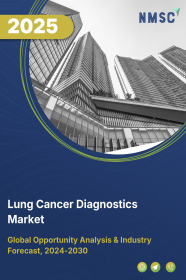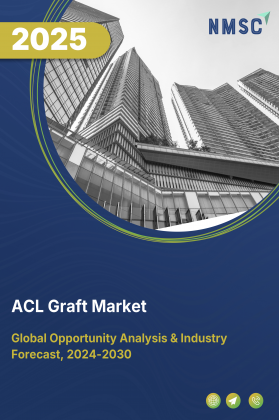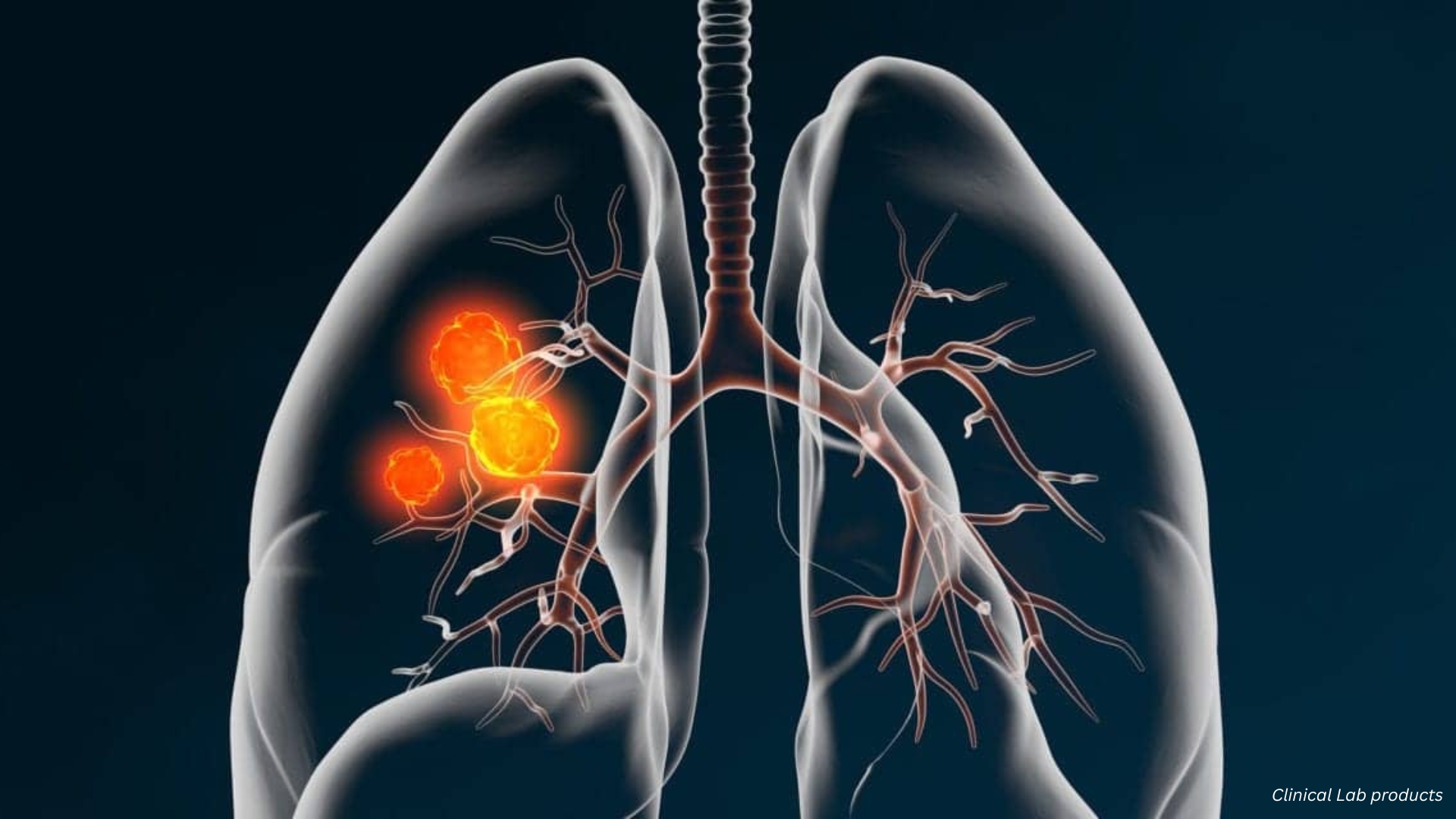
Lung Cancer Diagnostics Market by Type (Imaging Diagnostics, Molecular Diagnostics, and Histological Diagnostics), by Technologies (Traditional Imaging Technologies, Next-Generation Sequencing, Polymerase Chain Reaction, Immunohistochemistry, and Liquid Biopsy Technologies), by Test (Screening Tests, Diagnostic Tests, and Monitoring Tests), and by End-User – Global Opportunity Analysis and Industry Forecast 2024-2030
Lung Cancer Diagnostics Market Overview
The global Lung Cancer Diagnostics Market size was valued at USD 3.27 billion in 2023 and is predicted to reach USD 5.91 billion by 2030 with a CAGR of 10.4% from 2024-2030. The lung cancer diagnostics market refers on the development and deployment of advanced technologies and methods used for early detection, diagnosis, and monitoring of lung cancer. This market includes various diagnostic tools and techniques, such as imaging technologies (CT scans, PET scans, and MRI), molecular diagnostics, biomarker tests, and biopsy procedures. The primary advantage of the diagnostics tools and technologies is to improve patients’ outcomes through early and accurate diagnosis that is important for effective treatment and increased survival rates. cancer at its earliest stages, customize treatment plans to meet individual patient needs, and improve overall disease management. Consequently, the ongoing research and technological advancements make the market crucial in advancing the fight against lung cancer and fostering progress toward more precise and personalized healthcare solutions.
Market Dynamics and Trends
The rising incidence of cancer cases, particularly lung cancer due to factors such as smoking, environmental pollutants, and genetic factors, accelerates the need for advanced diagnostic technologies, thereby driving the growth of the market. According to a report published by the World Cancer Research Fund (WCRF) International, in 2022, the total number of cancer cases worldwide was approximately 20 million, with trachea, bronchus, and lung cancer cases accounting for about 2.4 million of these. Subsequently, the increasing prevalence reflects the critical demand for enhanced diagnostics tools and technologies, further fueling advancements and growth in the lung cancer diagnostics market.
Moreover, the increasing advancements in diagnostic technologies and methodologies including cutting-edge imaging techniques such as high-resolution computed tomography (CT) and positron emission tomography (PET), that in turn is accelerating the growth of the market. These technological breakthroughs enhance the ability to detect lung cancer at its earliest stages, that are crucial for improving patient outcomes and survival rates. For instance, in May 2024, National Cancer Institute, approved Alectinib, a post- surgery medicine for the treatment of lung cancer, boosting the lifespan of the patients. Consequently, such advancements in technologies and methodologies are further driving the lung cancer diagnostics market growth.
Also, the growing awareness about the importance of early detection and screening for lung cancer with more becoming educated about potential of early diagnosis, is further fueling the growth of the market. This awareness necessitates the growing demand for advanced screening technologies that identify lung cancer at its earliest stages. For instance, National Lung Screening Trial (NLST), Low-Dose Computed Tomography (LDCT) screening reduced lung cancer mortality by 20% compared to chest X-ray screening in high-risk individuals. Thus, this increased focus on early screening is another factor that drives the growth of lung cancer detection market.
However, the high cost of associated with lung cancer diagnostics tools and equipment, makes it limited to a certain level of population, restraining the growth of the market.
On the contrary, the integration of artificial intelligence (AI) and machine learning (ML) algorithms in lung cancer screening and imagining tools is expected to create ample opportunities. These technologies are being increasingly utilized to analyse medical images, such as computed tomography (CT) scans and X-rays and to interpret genetic and molecular data obtained from diagnostic tests. According to a report published by the National Library of Medicine as of 2023 demonstrates, AI-based lung cancer screening provides high accuracy results and utilizing AI algorithms to assist in diagnosing lung cancer significantly reduces the time required by radiologists. Therefore, the integration of AI and ML in diagnostics is self-assured to revolutionize the lung cancer diagnostics market, offering substantial opportunities for enhanced efficiency and accuracy in early detection.
Market Segmentations and Scope of the Study
The global lung cancer diagnostics market report is segmented on the basis of method, technologies test, end-user and region. On the basis of method, the global market is divided into imaging diagnostics, molecular diagnostics, historical diagnostics. On the basis of technologies, the global market is divided into traditional imaging technologies, next-generation sequencing, polymerase chain reaction, immunohistochemical and liquid biopsy technologies. On the basis of test, the market is categorized into screening tests, diagnostic tests and monitoring tests. On the basis of end-user, the global market is further divided into hospitals and clinics, diagnostic laboratories, imaging centres, academic and research institute and pharmaceutical companies. Regional breakdown and analysis of each of the aforesaid segments includes regions comprising of North America, Europe, Asia-Pacific, and Rest of The World (Row).
Geographical Analysis
North America holds dominates the lung cancer diagnostics market share and is expected to continue its dominance throughout the forecast period. This is attributed to the to increasing healthcare spending, advanced healthcare infrastructure and strong research and development activities in this region. For instance, in January 2024, the American Cancer Society estimates that in the US there are about 234,580 new cases of lung cancer (116,310 in men and 118,270 in women) and about 125,070 deaths from lung cancer (65,790 in men and 59,280 in women). Thus, strong focus on healthcare innovation and the prevalence of lung cancer further solidifies North America's leading position in the development of advanced diagnostic technologies.
Moreover, the increasing research and development activities by both local and international organizations on creating advanced diagnostic technologies to enhance the accuracy, speed, and accessibility of lung cancer detection is fueling the growth of the market. For example, in June 2024, UC Davis Health is deploying two innovative imaging technologies that will significantly enhance lung cancer diagnosis and treatment. The first is a mobile 3D CT imaging system, that allows for real-time 3D imaging of lung nodules, facilitating earlier and safer diagnoses. The second advancement involves the EXPLORER PET scanner, that provides high-quality images of lung tumors by tracking their unique blood supply, helping to assess treatment effectiveness. Consequently, these cutting-edge advancements reflect the ongoing research and development efforts, thereby driving significant progress in lung cancer diagnostics, further propelling the market's growth in North America.
On the other hand, Asia Pacific region is expected to show a steady rise in the lung cancer diagnostics market demand owing to high smoking rates, air pollution, and occupational hazards in the countries such as China, India, and Japan that experiencing significant increase in the lung cancer cases. For instance, in May 2024, Open Access Government stated in Southeast Asia and China the prevalence of tobacco smoking among male adults is 43.7% and 47.6%, that leads to widespread smoke exposure, thereby becoming the primary risk factor for lung cancer. This increasing burden of lung cancer due to these factors underscores the need for advanced diagnostic solutions, driving growth in the market across the region.
Furthermore, the rising government investments in the healthcare sector in countries such as India, China and Japan are significantly driving their funding for the healthcare sector, that in turn drives the growth of the market. These investments are being directed towards the development and deployment of advanced diagnostic technologies, including cutting edge imaging systems and molecular diagnostics.
According to the latest report published by the Ministry of Health and Family Welfare, the Indian budget expenditure on healthcare sector increased by approximately USD 47.63 billion from around USD 375.7 billion in 2023-2024 to about USD 428.69 billion in 2023-2024. Thus, these substantial investments are accelerating the advancement and adoption of sophisticated diagnostic technologies, thereby significantly boosting the growth of the lung cancer diagnostics market trends across the Asia-Pacific region.
Competitive Landscape
Various key players operating in the lung cancer diagnostics industry include Roche Holding AG, Thermo Fisher Scientific Inc., Abbott Laboratories, QIAGEN N.V., Bio-Rad Laboratories, Inc., Hologic Inc., Siemens Healthineers, Genomic Health Inc., Sysmex Corporation, and Agilent Technologies, Inc., and others. These market players are opting various strategies including partnership, and product launch to maintain their dominance in the industry.
For instance, in March 2023, Roche Diagnostics received FDA (Food and Drug Administration) approval for the expanded label of its VENTANA PD-L1 (SP263) Assay. This approval allows the assay to identify patients with locally advanced and metastatic non-small cell lung cancer (NSCLC) that are eligible for treatment with Libtayo, a PD-1 inhibitor therapy. Libtayo, developed by Regeneron Pharmaceuticals and Sanofi, is an immune checkpoint inhibitor that works by blocking the PD-1 protein on immune cells, thereby enhancing the body's ability to recognize and attack cancer cells.
Also, in July 2022, Siemens Healthineers launched a 3D imaging system integrated with endoluminal robotics for accurate transbronchial lung biopsies. This integration provides detailed 3D images of the target area, minimizing the risk of false-negative tissue samples and accelerating the diagnostic process for patients.
Moreover, in May 2023, Thermo Fisher Scientific collaborated with Pfizer to enhance access to next-generation sequencing (NGS) testing for lung and breast cancer patients in over 30 countries across Latin America, Africa, the Middle East, and Asia. This initiative is particularly significant in regions where advanced genomic testing is limited or previously unavailable.
Key Benefits
-
The report provides quantitative analysis and estimations of the lung cancer diagnostics market from 2024 to 2030, which assists in identifying the prevailing market opportunities.
-
The study comprises a deep-dive analysis of the current and future lung cancer diagnostics market trends to depict prevalent investment pockets in the market.
-
Information related to key drivers, restraints, and opportunities and their impact on the market is provided in the report.
-
Competitive analysis of the players, along with their market share is provided in the report.
-
SWOT analysis and Porters Five Forces model is elaborated in the study.
-
Value chain analysis in the market study provides a clear picture of roles of stakeholders.
Key Segments
By Type
-
Imaging Diagnostics
-
Molecular Diagnostics
-
Historical Diagnostics
By Technologies
-
Traditional Imaging Technologies
-
Next-Generation Sequencing
-
Polymerase Chain Reaction
-
Immunohistochemistry
-
Liquid Biopsy Technologies
By Test
-
Screening Tests
-
Diagnostic Tests
-
Monitoring Tests
By End-User
-
Hospitals and Clinics
-
Diagnostics Laboratories
-
Imaging Centers
-
Academic and Research Institute
-
Pharmaceutical Companies
By Region
-
North America
-
The U.S.
-
Canada
-
Mexico
-
-
Europe
-
The UK
-
Germany
-
France
-
Italy
-
Spain
-
Denmark
-
Netherlands
-
Finland
-
Sweden
-
Norway
-
Russia
-
Rest of Europe
-
-
Asia-Pacific
-
China
-
Japan
-
India
-
South Korea
-
Australia
-
Indonesia
-
Singapore
-
Taiwan
-
Thailand
-
Rest of Asia-Pacific
-
-
RoW
-
Latin America
-
Middle East
-
Africa
-
Key Players
-
Roche Holding AG
-
Thermo Fisher Scientific Inc.
-
Abbott Laboratories
-
QIAGEN N.V.
-
Bio-Rad Laboratories, Inc.
-
Hologic Inc.
-
Siemens Healthineers
-
Genomic Health Inc.
-
Sysmex Corporation
-
Agilent Technologies, Inc.
REPORT SCOPE AND SEGMENTATION:
|
Parameters |
Details |
|
Market Size in 2023 |
USD 3.27 Billion |
|
Revenue Forecast in 2030 |
USD 5.91 Billion |
|
Growth Rate |
CAGR of 10.4% from 2024 to 2030 |
|
Analysis Period |
2023–2030 |
|
Base Year Considered |
2023 |
|
Forecast Period |
2024–2030 |
|
Market Size Estimation |
Billion (USD) |
|
Growth Factors |
|
|
Countries Covered |
28 |
|
Companies Profiled |
10 |
|
Market Share |
Available for 10 companies |
|
Customization Scope |
Free customization (equivalent to up to 80 working hours of analysts) after purchase. Addition or alteration to country, regional, and segment scope. |
|
Pricing and Purchase Options |
Avail customized purchase options to meet your exact research needs. |




















 Speak to Our Analyst
Speak to Our Analyst

























